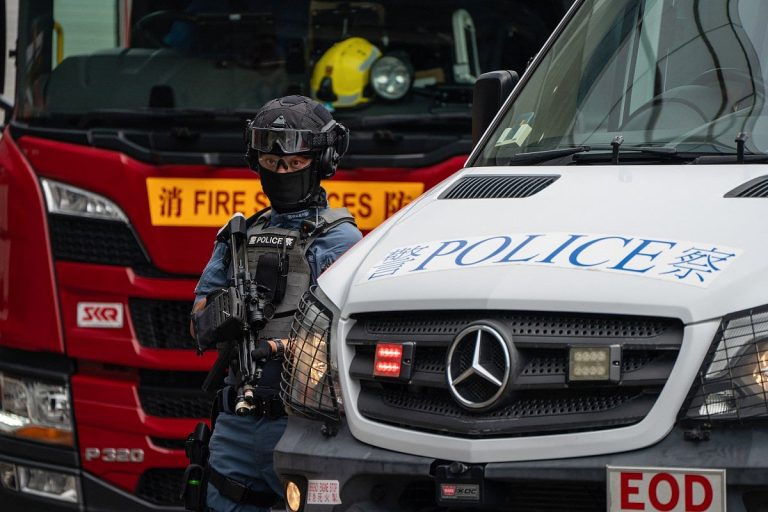Louvre Heist Reveals Major Security Flaws at Museum
In a brazen daytime robbery, thieves executed a heist at the Louvre that has drawn comparisons to cinematic capers. The incident, which lasted less than eight minutes, raises questions about security protocols at one of the world’s most famous museums. Here’s a detailed look at how the theft unfolded and the implications for museum security.
The Heist Unfolds
On a seemingly ordinary day, a group of thieves arrived at the Louvre in a truck, equipped with power tools and a ladder. In a matter of minutes, they managed to break into the museum and make off with jewels valued at approximately $102 million. This audacious act not only shocked the public but also highlighted significant vulnerabilities in the museum’s security systems.
Security Oversights
The aftermath of the robbery revealed troubling information about the Louvre’s cybersecurity measures. A report by the French newspaper Libération disclosed that an audit conducted by France’s national cybersecurity agency, ANSSI, in 2014 had identified serious flaws. The agency found that passwords used for security systems were alarmingly simple and easily guessable, including the name of the company that developed the software.
A follow-up audit in 2015 did not yield any improvements, and it appears that security protocols had not been updated in nearly a decade. Following the heist, officials discovered that the password for crucial systems had been reduced to the word “Louvre,” a clear indication of negligence in maintaining robust security practices.
Lessons in Password Security
In light of this incident, experts emphasize the importance of strong password management. Microsoft outlines several best practices for creating secure passwords:
– **Length and Complexity**: A strong password should be at least 12 characters long, with 14 or more being preferable. It should include a mix of uppercase and lowercase letters, numbers, and symbols. – **Avoid Common Words**: Passwords should not contain dictionary words or easily identifiable names related to individuals, products, or organizations. – **Uniqueness**: Each password should be significantly different from previous ones to enhance security. – **Memorability**: While passwords should be difficult for others to guess, they should still be easy for the user to remember. Using phrases like “6MonkeysRLooking^” can be effective.
Future Security Measures
In response to the heist, the Louvre is reportedly planning to implement new security measures, including anti-ramming barriers to prevent similar incidents in the future. The museum’s officials are under pressure to reassess and upgrade their security infrastructure to protect their valuable collections.
FAQs
What happened during the Louvre heist?
Thieves executed a swift robbery, breaking into the Louvre in under eight minutes and stealing jewels worth approximately $102 million.
What security flaws were discovered after the heist?
Investigations revealed that the museum’s cybersecurity measures were outdated, with easily guessable passwords still in use, including “Louvre” itself.
What steps are being taken to improve security at the Louvre?
The Louvre plans to enhance its security measures, including the installation of anti-ramming barriers and a comprehensive review of its cybersecurity protocols.
Conclusion
The Louvre heist serves as a stark reminder of the importance of robust security measures in protecting valuable assets. As the museum works to address its vulnerabilities, it highlights the need for ongoing vigilance and improvement in security practices across cultural institutions. Moving forward, the Louvre aims to implement significant changes to prevent future incidents.
The Louvre, renowned for its extensive collection of art and historical artifacts, attracts millions of visitors each year, making it a high-profile target for criminal activity. The museum’s previous security measures, which were deemed inadequate, have now come under intense scrutiny not only from the public but also from cultural institutions worldwide. This incident may prompt other museums to reevaluate their own security protocols, particularly those that house valuable collections.
In addition to physical security enhancements, experts suggest that museums should invest in advanced surveillance technologies, including artificial intelligence systems capable of detecting unusual behavior in real-time. Such innovations could serve as a deterrent against theft and improve response times during emergencies. The Louvre’s management is likely to explore these options as part of a comprehensive strategy to safeguard its treasures and restore public confidence in its ability to protect its assets.
As the investigation into the heist continues, authorities are also examining the broader implications for cultural heritage protection. The incident underscores the need for collaboration among museums, law enforcement, and cybersecurity experts to develop more resilient frameworks that can withstand evolving threats in an increasingly digital world.
Also Read:
UAE Taxi Fares Ranked Among World’s Most Affordable







